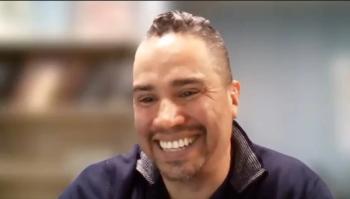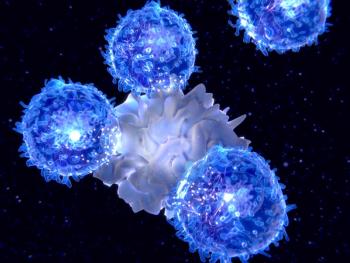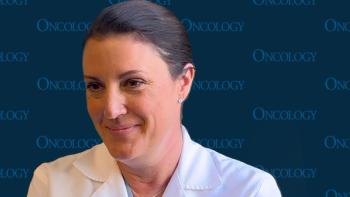
- ONCOLOGY Vol 9 No 11
- Volume 9
- Issue 11
Changes in Laryngeal Preservation Study Help Increase Accrual
RTOG 91-11, a National Cancer Institute high priority laryngeal preservation protocol, has been streamlined and the accrual
RTOG 91-11, a National Cancer Institute high priority laryngealpreservation protocol, has been streamlined and the accrual ratehas increased. More than 175 patients have now been accrued tothe study.
Patients with T4 disease because of questionable cartilage invasionand patients who have tumors extending up to 1 cm into the baseof the tongue are now eligible to participate in the study, saidDr. Arlene Forastiere, a study chair.
The time between initial endoscopy and registration onto the trialhas been lengthened to four weeks (rather than three), said Dr.Forastiere.
In addition, a number of followup radiologic studies and bloodwork have been removed from the protocol, she said. "In thisage of cost consciousness, we have limited the followup studiesto only those which are absolutely necessary," she said.
The treatment schedule of the protocol is unchanged. Patientsare randomized into one of three arms. Patients in Arm One ofthe study are treated with cisplatin (100 mg/m²) and 5-FU(1 gm/m²/24 hours over 120 hours).
The chemotherapy is given two times, three weeks apart. If thereis no response to the chemotherapy, then patients undergo surgeryfollowed 2 to 3 weeks later by radiation therapy (2.0 Gy for 5days a week for seven weeks). If there is a complete or partialresponse, an additional cycle of cisplatin and 5-FU is given,followed by radiation therapy.
Patients in Arm Two of the study undergo radiation therapy andconcurrent cisplatin (100 mg/m²) every three weeks for atotal of three doses.
Patients in Arm Three of the study are treated with radiationtherapy alone.
The primary endpoint of the trial is survival; time to recurrence,side effects and quality of life also will be analyzed. RTOG 91-11is an intergroup study with Eastern Cancer Oncology Group andSouthwest Oncology Group participating.
Articles in this issue
about 30 years ago
PET Scanning Said to Save Money and Improve Staging of Lung Cancerabout 30 years ago
Ribozyme Gene Therapy for Cancer Nears Clinical Trialsabout 30 years ago
Networking May Be Key to Academic Cancer Survival Under Managed Careabout 30 years ago
Chances of Worldwide Plagues Increasing, Scientists Sayabout 30 years ago
Initiatives Can Contain Costs and Increase Quality of Nursing Careabout 30 years ago
New 'Calibrator' Should Improve Prostate Cancer Testingabout 30 years ago
Infectious Disease Testing for Blood TransfusionsNewsletter
Stay up to date on recent advances in the multidisciplinary approach to cancer.


























































































